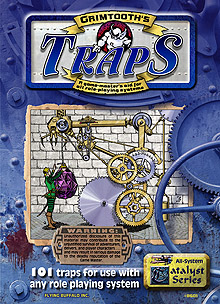The title of today’s column might sound ego-centric, but really it’s about the experience I had today. As fun and as awesome as it was I walked away feeling that a couple of important principles had been powerfully reinforced.
Less than a week ago, a friend of mine posted on facebook that she needed some extras to film an office scene. I thought she was just goofing, or that this might be part of a class project she needed for college and agreed to do any old, fat guy parts that were open. She wasn’t goofing and it wasn’t a class project. It turns out that she is involved with a group here in
A casting sheet was sent to me asking for people to show up in business casual – no stripes – and to be there early. No problem. I arrived ahead of all the rest of the extras.
The actual cubicle farm for a local business served as the set for the scene they filmed today. Once everyone arrived the assistant director went over all the important details of the assignment with us; what areas the camera covered, what areas the camera didn’t cover, and where they kept all the snacks. When we weren’t participating in a scene we were welcome to stay in the “cast lounge” and munch away on granola bars and chips or watch the filming from one of the safe zones outside the camera’s view.
For each take, we were given marks where we started our extra activity; for me that amounted to a lot of walking around in the background. When they yelled “Background Action” I started walking. When they yelled “Cut” I stopped and returned to my mark.
I’d like to think that I’m a real good walker; because that’s all they had me do. I walked up one aisle and down another with a few nods to my fellow extras as I passed them by. Maybe next time they’ll let me pretend to be talking on a phone, or getting a drink at the water cooler.
That went on for five or six takes before they changed camera angles and shot it again. We were given new marks and new assignments and did it all over again.
And again.
And again.
The experience gave me a new respect for actors. Imagine having to run through the same lines a hundred times during a day. I guess it would sort of be like talking to my kids: “Don’t do that.” “Don’t do that.” “Don’t do that.” But more gratifying.
Extras went home as the need for background activity dwindled. By the time they were doing close-up shots of the actors doing the same scene all of us were cut loose. I chose to stay and watch until they were finished for the day.
On the drive home I thought about my morning as an extra.
I’m amazed at how quickly this developed (for me). It came out of nowhere and in less than a week’s time I have a whole new opportunity open to me. I don’t know where it will take me. Maybe no place. But it illustrated how our careers can be so quickly turned around. And I wanted to post about it because this principle applies to all of us. We can be plodding along in pursuit of our goals, or our dreams, and we turn a corner and run smack into Mr. Opportunity. Read some of the interviews with well-known authors and see if this doesn’t play into the story of their personal success.
Another principle that came to light was the importance of networking. I met my friend, Amber, when I took creative writing classes at the local community college. The writing group we formed with our fellow-students is still my primary source of story critique. And while Amber has not participated in the group for the last couple of years we have stayed in contact with one another and because of that I have the chance to be involved with a production team in the entertainment industry. Networking is responsible for my being published in the City of the Gods anthology. A friend that I worked with in the hobby-game industry introduced me to Steve Crompton and after doing some design work for him I was asked to contribute to the book as an author. It may be just a short story in a book from a small publisher, but I look at it as a good start. I expect that several good and valuable contacts will result from this humble first step.
I’m currently in the process of joining my first online critique group. These are authors who have some success in the publishing community already. What a great group of people to be able to help me take my writing to the next level. I feel that I am the weak link in this particular group. Which is good for me, bad for them. The point being that this is another opportunity that has opened up because of my networking efforts.
Then there are all of you. People who read my blog. People who share my twitter experience. People who participate in the same online writing challenges that I do. There is no doubt in my mind that several of you will become important contacts for me in the days, and months, and years ahead. Hopefully, the reverse will also be true.
Today was a good day for me. I want it to be a good day for you as well. Keep plugging away at your writing. Keep an eye open for opportunities within your network. Then make sure to let me hear about it when you have a day like mine.





